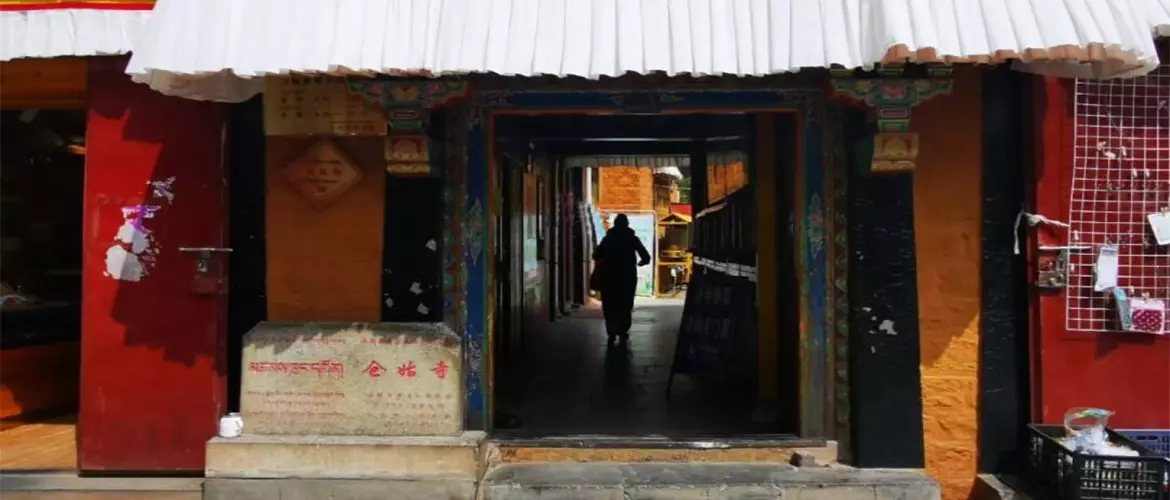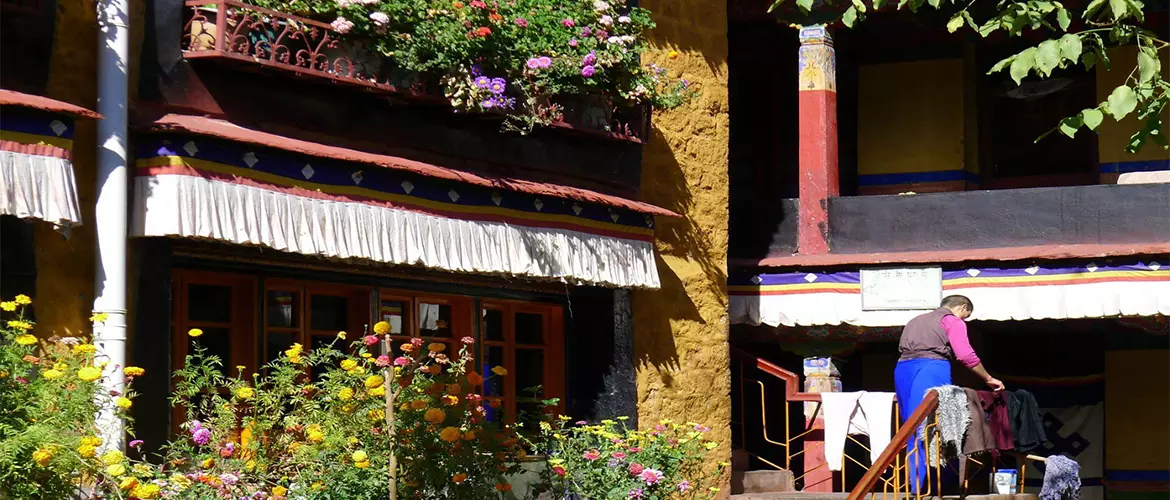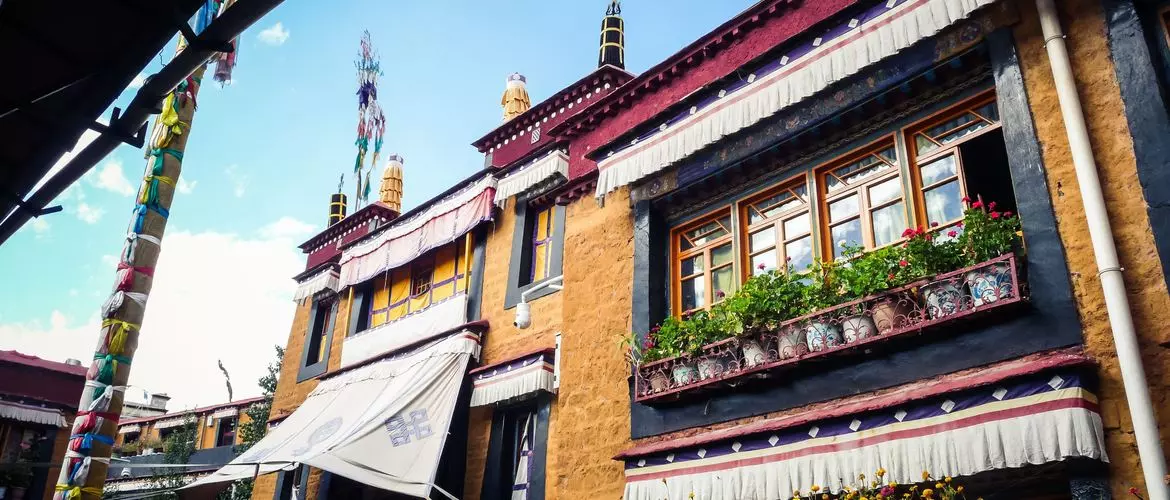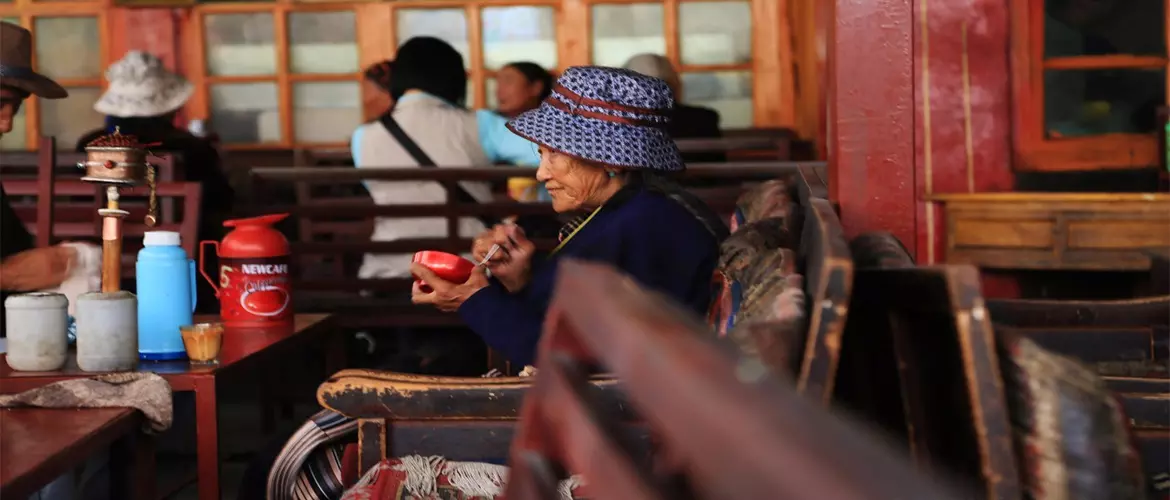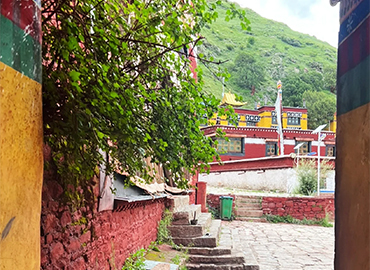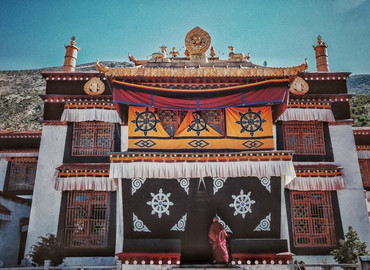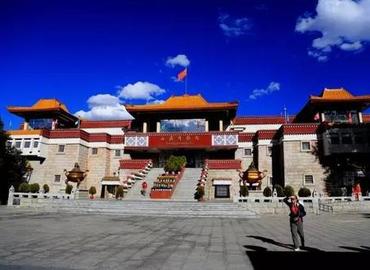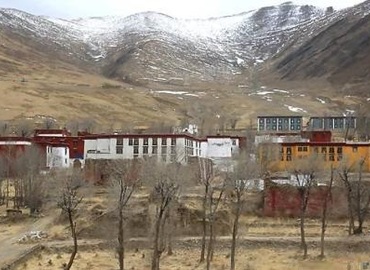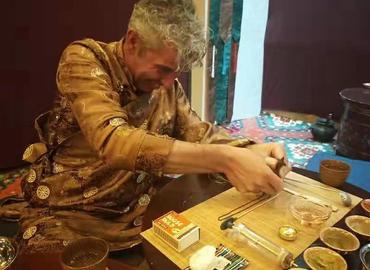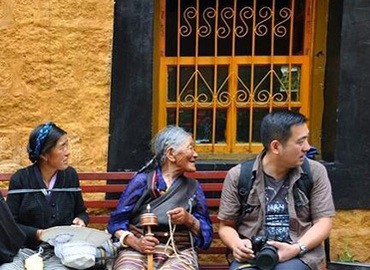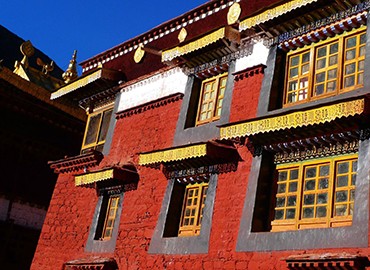Canggu Nunnery (also known as Ani Sangkhung Nunnery) is located in a small alley south of Jokhang Temple, and it's also the only nun temple in downtown Lhasa. Canggu Nunnery is where women Buddhists learn Buddhist scriptures and various cultural knowledge. The nunnery is not big, but it is quaint and different from other temples in Lhasa.
In History
In history, Canggu Nunnery can be traced back to the 7th century during the Tubo Dynasty. In the summer of that time, floods from the upper reaches of the Lhasa River converged downstream, causing a sudden freshet, which brought disaster and losses to the farmland and villagers on both sides of the river. In order to eliminate the harm of floods to the people and Lhasa city, the king of Tibet, Songtsen Gampo dug a hole in the embankment of the Lhasa River, in which he practiced and recited scriptures, praying to eliminate flooding and make people live in peace. Later, people called the hole "Canggu", which means “underground cave”.
In the 12th century, a highly skilled doctor named Jiewabeng once meditated in the cave and achieved Mahasiddha, which made this long-known meditation cave even more famous. In the 15th century, Tsongkhapa's proud disciple, Gujue Duodan, officially built Canggu Nunnery on the foundation of the cave. However, the scale of the temple was not very large at that time. It was not until the beginning of the 20th century that Pabengka Rinpoche and the 90th Ganden Tripa Quza invested for large-scale expansion, and the Canggu Temple gradually formed its current scale.
In the past, many nobles sent their daughters to Canggu Nunnery to avoid the high dowries they had to pay for their daughters' marriages. Unlike the other nuns who came from poor families and had to go around for alms, these noble ladies lived in the small buildings built by their fathers and brothers. They can not only get free from labor but also have servants. However, the lonely Buddhist lifestyle can't suppress the hearts of those who pursue love. Many noble nuns had affairs with their lovers and even dated them in the nunnery. Thus, only the nuns of Canggu Nunnery can practice Buddhism and live a secular life.
Architectural Layout
The main hall of Canggu Nunnery is not very large, divided into upper and lower floors. The upper level is the scripture hall. There are murals of the four heavenly kings painted on both sides of the door of the scripture hall. The carvings on the eaves and doorposts are almost the same as those in other Tibetan Buddhist monasteries. Above the gatepost, there are the lion and human face images. Canggu Temple is mainly dedicated to Eleven-Headed Avalokiteśvara, as well as Manjusri, Amitābha, Tsongkhapa, and thirteen thangkas from the Ming Dynasty and Qing Dynasty.
The highlights of Canggu Temple are where Songtsen Gampo once practiced on the ground floor of the main Buddhist temple. The cave is enshrined with the statue of Songtsan Gampo right now. And there are three full-time nuns chanting and praying here every day, as well as replacing offerings, or adding lamp oil.
Financial Support
As the management organization of Canggu Nunnery, the Nunnery Committee consists of four members, namely the director and deputy director, as well as two committee members, who manage Buddhist affairs and other operations respectively. In addition, there are also special personnel responsible for daily discipline supervision and Buddhist activities. The warehousing department is responsible for almsgiving, and the three younger nuns take turns to undertake it every two years. The remaining finances of almsgiving should be handed over to the next round. Besides, there are 20 young nuns who are in charge of daily affairs in the kitchen.
The economic income of Canggu Nunnery comes from the offerings and the donations of the believers. Moreover, in order to make up for the deficiency, the Nunnery also runs sweet teahouses, restaurants, clinics, etc. nearby. However, most of these operating entities are charitable, not only providing good quality products and thoughtful service but also offering cheap prices.
Most of the houses of the nunnery were built by the nuns themselves, and the property rights belong to the nunnery. After a nun dies or returns to secular life, if there is no apprentice who can inherit the property, the house will be withdrawn by the nunnery or resold to other nuns, and the money will go to the provident fund of the nunnery. The nuns have different sources of livelihood. The nuns with better family conditions are provided by the family; other nuns rely on their income from going out to engage in Buddhist activities; a few extremely poor nuns make a living by doing laundry for others.
The nuns with better family conditions are provided by the family; other nuns rely on their income from going out to engage in Buddhist activities; a few extremely poor nuns make a living by doing laundry for others.
Selection System
Many women want to practice in Canggu Nunnery. However, due to the limited facilities, the administrators can only implement a strict examination system to select outstanding talents. Specifically, one must be able to recite 500 pages of scriptures fluently to enter the nunnery. It takes a long time to memorize the scriptures, and some women have been preparing for 16 years and can't pass the exam. Most nuns come from far away to practice here, such as Shannan, Nyingchi, Dagtse and other places.
Sweet Teahouse
Entering the gate of the temple, you can see the sweet tea house. This is a large open-air tea house, and the sweet tea is very delicious and famous. The teahouses are usually dominated by locals. In recent years, tourists have also come here to drink tea and experience the life of the locals. Although the nunnery is not big, it is clean and tidy, with flowers everywhere in all four seasons.
Here's a video about Canggu Nunnery for watching more details.
Email response within 0.5~24 hours.


